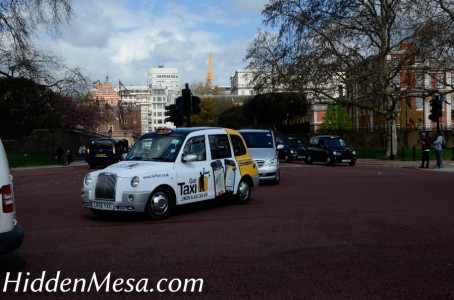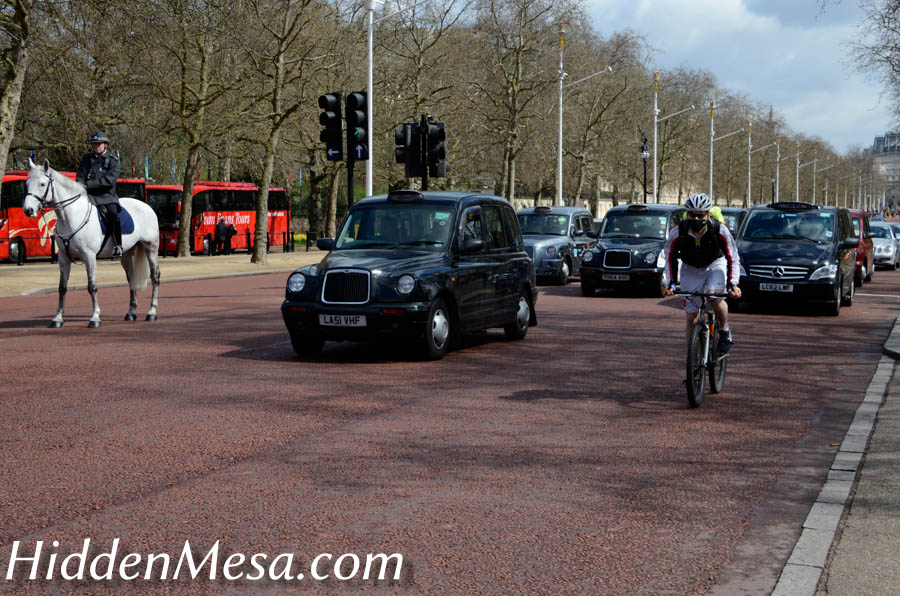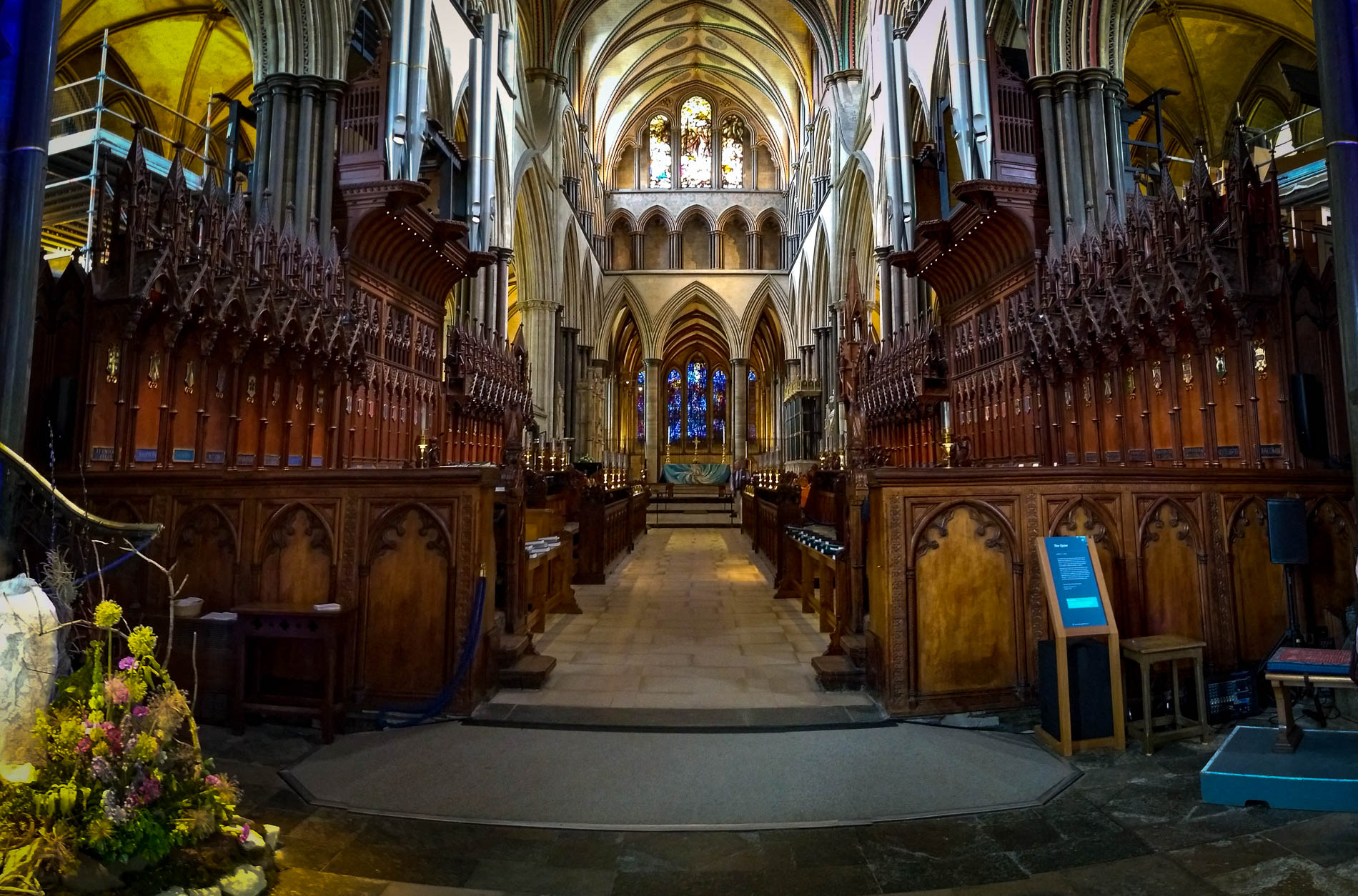I don’t know how many times I’ve heard someone from the US ask if a particular country drives on the wrong side of the road. When they say that, they are of course referring to driving on the left side rather than the right side of the road as is the rule here in the States. Often, I’ve heard them say it in the presence of someone who comes from a country that drives on the left, not realizing how that kind of question, phrased in that way, could leave another person feeling a little put out.
So why do countries drive on different sides? And is it really wrong to drive on the Left? It turns out that since we’ve been to a country that drives on the left, and we’ve spent twenty minutes looking it up on the internet, we’re just the right experts to answer that question.
According to our reading, it all started out as a left sided world. Way back in feudal times, when society was more violent, swordsmen tended to walk on the left side of the road. They did this for some very good reasons. Most people – including feudal swordsmen – are right handed. Carrying a sword in a sheath by a right handed person requires that the sword be carried on the left side. The reason is that a sword is too long to be drawn from the scabbard unless it’s done so in a “cross draw fashion”. A right handed swordsman also wanted to present his right hand – the hand with the weapon – when passing someone on the road. As a result, he would tend to walk on the left where he could “cross draw” his weapon from the left and present it to the center or opposite side of the road with his right hand.
As an aside, have you ever considered why you mount a horse from the left? Same reason. In feudal times, swordsmen carried their swords on the left of their bodies in order to clear them from their scabbards with their right hands. With the sword on the left, it’s almost impossible to mount a horse from the right without getting tripped up by the sword. Also, a horseman wanted to mount from the side of the road, not the middle. It therefore became the practice to mount from the left, from the safety of the side of the road on the left. Mounting your horse to this day is still practiced from the left side. Motorcycles have their kickstands installed on the left side, even in the States where motorcycles are ridden on the right side, but mounted like a horse from the left.
Back in the 18th century the US and France started using very large wagons for transporting goods, pulled by teams of several horses. These very large wagons did not have a place for the driver to sit, so the teamster had to sit on one of the horses to drive. In order to operate his whip effectively on the horses the teamster- who was usually right handed – sat on the left horse in the back to the team. Being on the left horse, the teamster naturally wanted to travel on the right side of the road.
At some point in history, and for reasons we could not determine, the Pope decided that folks should drive on the left. Most French are Catholic, so they started out driving their carriages on the left. The aristocracy in France, however, developed the habit of driving their carriages really fast, so the peasants migrated to the right to avoid being run down. When the French Revolution happened in 1789, the Aristocracy, in order to keep a low profile and avoid being beheaded, started driving on the right too. In his conquests, Napoleon Bonaparte continued to enforce the right hand road rule in countries he visited, and thus started the trend around the world to travel on the right side.
Meanwhile, in the United Kingdom, they weren’t using the very large wagons and the driver had a place to sit on the wagon. Being a bit further back (sitting on the wagon), the driver preferred to sit on the right side to keep his whip from getting tangled with the load while he flogged his horses. This reinforced the idea that they wanted to drive on the left.

Where a native right side driver can really get confused is with right turn lanes. When cars are stopped awaiting a right turn at an intersection, it looks exactly like a left turn situation for right sided drivers. It’s only when traffic begins to move that you realize that the traffic in the left turn lane is actually turning right. If you’re a pedestrian and you’re in the middle of the road at this point because you don’t know how to obey traffic lights, you’re in trouble. Image by Bonnie Fink
About one fourth of the world currently drives on the left side of the road. Many of those countries are former colonies of the British Empire, or had close dealings with the British at some point in the past before automobiles. As time moves on, the trend seems to be to switch to the right side of the road; probably because most of the world currently drives on the right, but the process is slow, and for some countries may never happen at all. The United Kingdom apparently entertained the idea of switching to the right back in the 1980s, but the cost was estimated to be nearly 4 billion pounds, according to one report we’ve read. And, the sentiment among the British seems overwhelmingly to favor the status quo.
So how does this all translate down to the average traveler who finds him or herself in a country that drives on “the wrong” side of the road? Whether it’s the left or right, our experience is that it’s no big deal. It takes a few minutes to get your head wrapped around what you’re doing, and you certainly have to pay attention, but our one driving experience in New Zealand wasn’t a problem. We quickly moved from worrying about being on the left side to enjoying the scenery.
While in England we did not drive. What was surprising though was the difficulty in simply crossing the street on foot. We found that we tended to look for traffic the wrong way! This was especially true at intersections, which is where you’ll be crossing the street if you’re doing it legally. On left sided traffic, cars can make left turns on red after a stop, and the folks turning right do so in a right turn lane which looks a lot like a left turn lane to us Americans. Our solution finally was to look both ways and not cross if there was any traffic anywhere! Hey, it worked for us.









